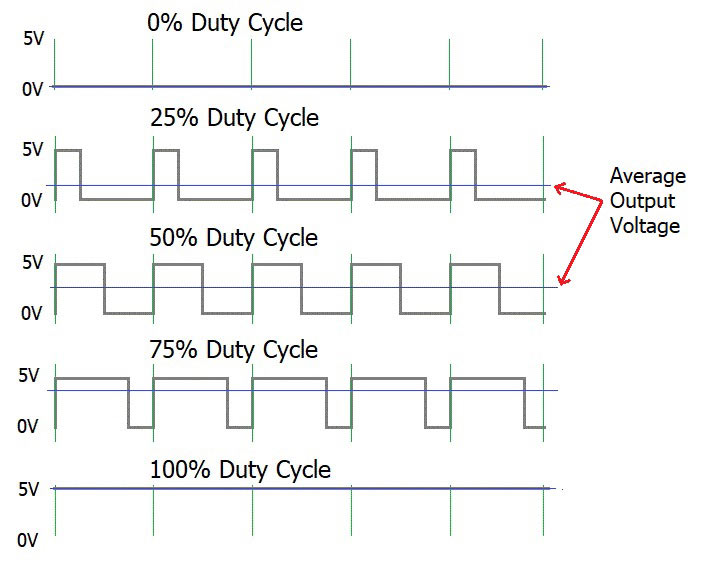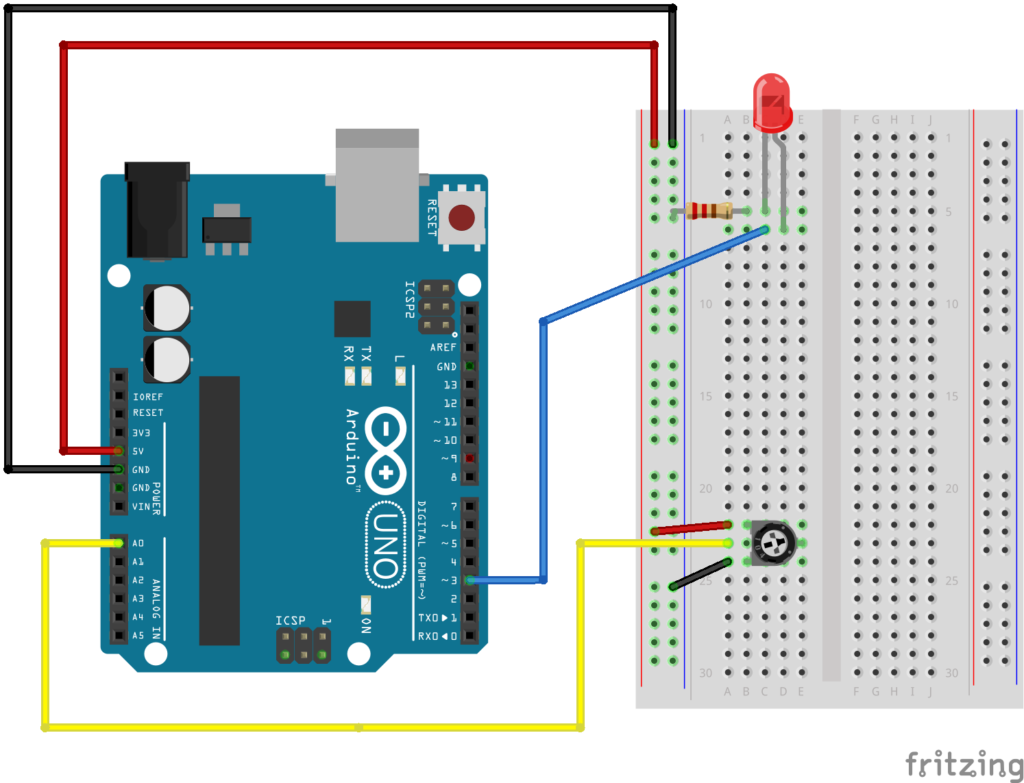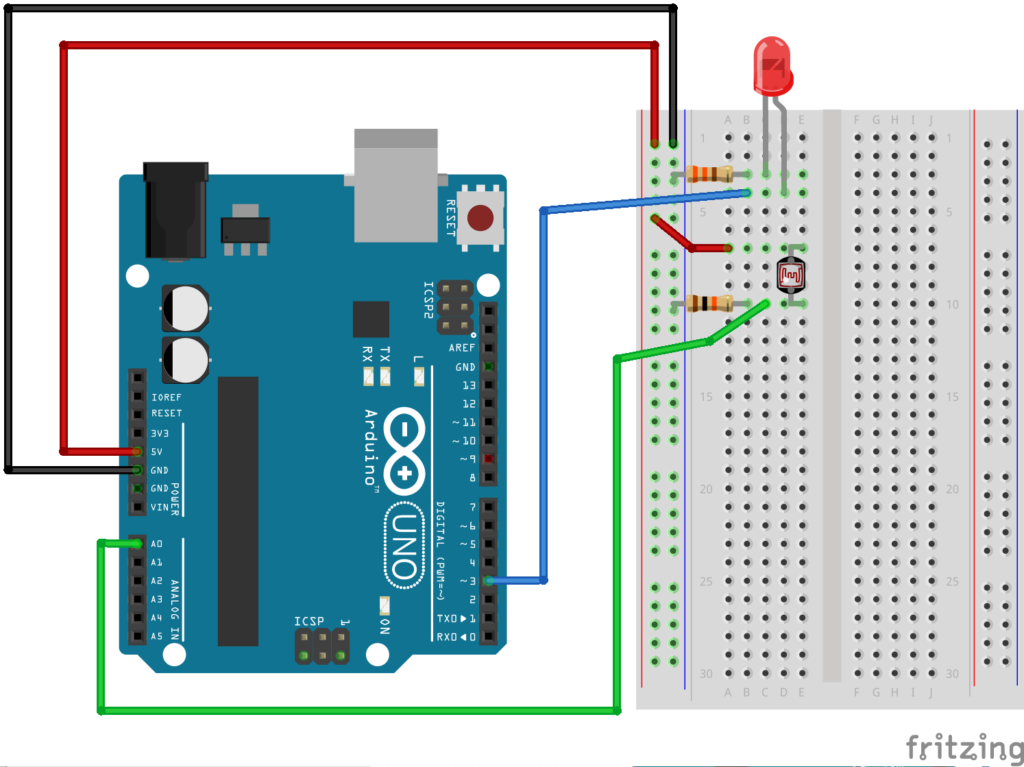Inside a potentiometer:

Pulse Width Modulation:

const int ledPin = 2;
bool ledState = LOW;
// a really longer number with no + or - sign
unsigned long toggleTime = 0;
int triggerInterval = 500;
void setup() {
pinMode(ledPin, OUTPUT);
Serial.begin(9600);
}
void loop() {
// read the analog input
int knobValue = analogRead(A0);
// map that input to a range appropriate for our use
// in this case, we take the range of the photocell and map it to millis between 10 & 500
// this is the blink interval for the LED
triggerInterval = map(knobValue, 190, 860, 10, 500);
// print out the original value and the mapped value on the same line
Serial.print(knobValue);
Serial.print(" ");
Serial.println(triggerInterval);
// if the current time (millis) is more than the exact time when we are supposed to toggle
if (millis() > toggleTime) {
// flip the LED to the opposite of what it was
ledState = !ledState;
// set the next time the LED should toggle
// to the current time + whatever the blink interval amount of time is
toggleTime = millis() + triggerInterval;
}
// turn the LED on or off based on the ledState vaviable
digitalWrite(ledPin, ledState);
}


